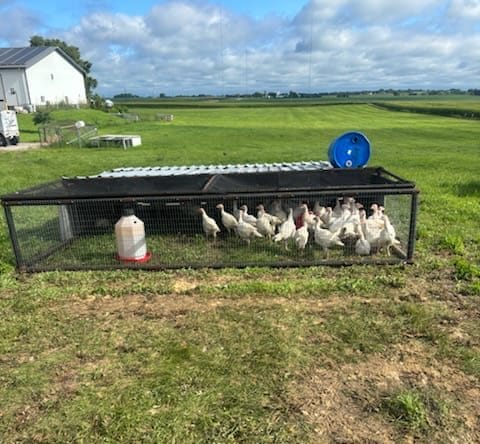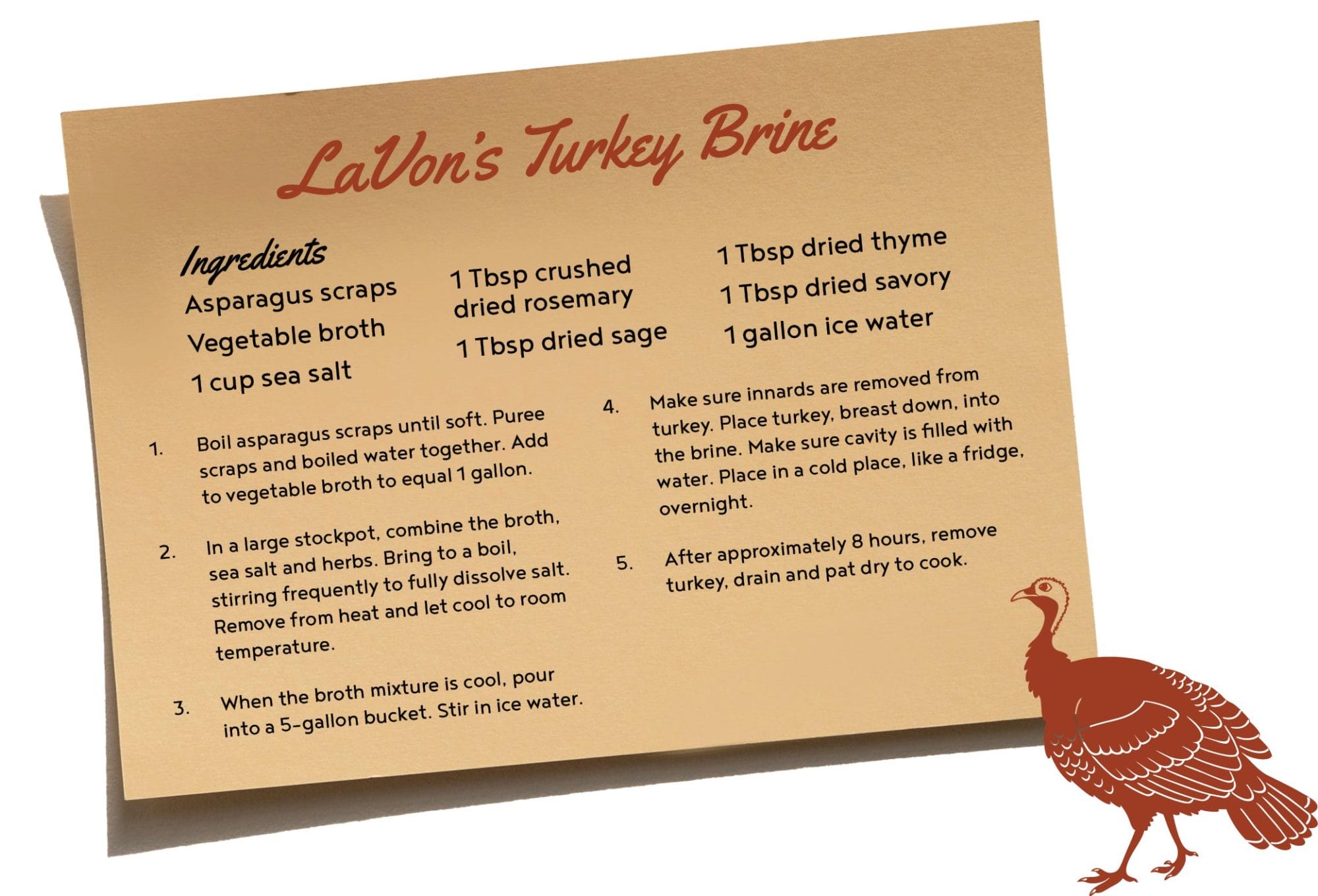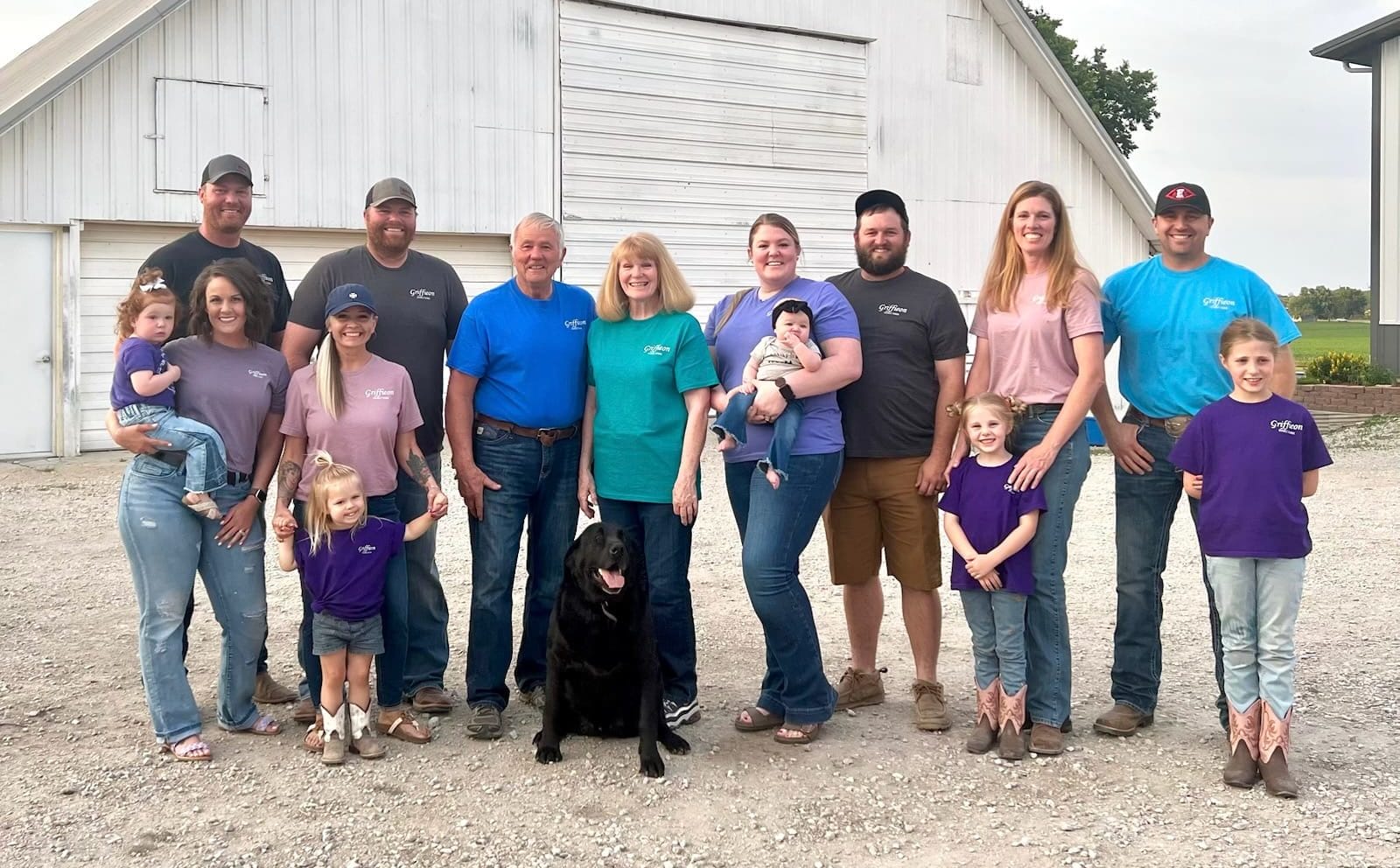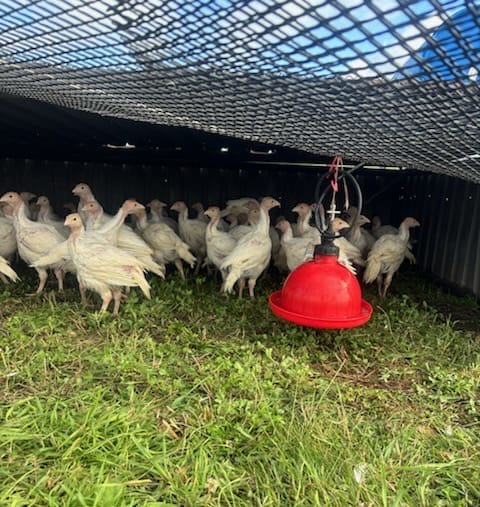Making a Meal of Memories
LaVon and Craig Griffieon share stories and lessons from their years of raising turkeys
Three generations will gather around the Griffieon family’s Thanksgiving table this year, headed by LaVon and Craig. The turkey that they’ll enjoy is about as local as can be, coming from their pasture next to the house, raised on feed they grew and milled. They, along with their customers, have enjoyed this annual “turkeyful” bounty for nearly three decades.
Stories abound from these years: of childhood businesses, tricks gained through tribulation and weathering life’s literal storms. Gathered in gratitude around the table, the stories of raising food are ready to be recalled over heaping hills of mashed potatoes, spears of asparagus – and, of course, the turkey centerpiece.
The Starter Course
Craig Griffieon is the fifth generation to grow up on this farm on the northern edge of Ankeny, Iowa. But he’s the first to raise turkeys – though adding the birds wasn’t actually Craig’s idea.
The enterprise started when Craig and LaVon’s son, Nick, wanted a four-wheeler. “I said, you want a four-wheeler?” LaVon remembers. “You figure out a way to pay for it.” Inspired by a session at the Practical Farmers of Iowa annual conference, Nick and a friend raised chickens to sell at the farmers market. But their business acumen lagged behind Nick’s poultry-raising ability.
The friends encountered two problems familiar to many farmers: marketing and business planning. “Nobody stopped at the booth,” LaVon says. “I go by to see how they’re doing and they’ve got headphones on listening to their little Walkman. I told them, ‘You’ve got to talk to people. Sell your chickens!’”
With the proper guidance on people skills, Nick eventually sold all 100 chickens for $5 each – $500 of pure profit! Or so the duo thought. “They forgot to factor in any expenses,” LaVon laughs. “They were $11 in the hole.”
But they didn’t make the same mistake twice. The next batch, they started making their own feed. They also added turkeys, despite not having built a pen to house them yet. “One morning I’m making the bed on the upper floor,” LaVon says, “and these huge turkeys fly past the bedroom window.” Between the turkeys and the chickens, the boys had soon saved plenty of money. But they were so busy raising the turkeys, LaVon says, they never got around to buying the four-wheeler.
Side Dishes

The turkeys reside in an updated version of Nick’s original pen design on the Griffieon farm in Ankeny, Iowa.
The turkeys eventually became a long-standing farm enterprise for the whole family. Over the years the Griffieons adapted their turkey-raising methods to incorporate tricks they’ve learned along the way.
For instance, LaVon waits to order poults until she sees how many are left at Tractor Supply, because she can get those for pennies on the dollar. They raise 70 Broad Breasted White turkeys per year. At around $12 per full-priced chick, picking up these discount poults can mean significant savings.
They’ve also learned that high humidity can harm chick development. “If they start to hatch when it’s really humid out, in about six weeks they’ll just start toppling over,” Craig says. “It’s the weirdest thing.”
The family learned from their veterinarian that the humidity impacts how the poults’ lungs form. Given that the poults are hatched elsewhere, often other states, it can be hard to avoid this. They now try to anticipate when the worst of the summer humidity will be past at the hatchery, which usually means waiting longer to buy poults.
In general, the Griffieons have found that the domesticated turkey breeds they raise need more oversight. “When they’re babies, if you look at them cross-eyed, they’ll fall over,” LaVonne says hyperbolically.
While scientists point to the keen intelligence, memory, survival skills and complex social lives of wild turkeys, the process of breeding modern hybrids has led to the loss of some of those adaptive traits. “They’re way more delicate and way more expensive than chickens,” LaVon says.
The Griffieons have had to learn to safety-proof their turkey pens. For example, they discovered poults laying dead near the waterer. The reason? The poults were drowning themselves as they tried to drink. “What they were doing was putting almost their whole head under the water,” says Craig. Putting marbles in the waterer counteracts this by limiting how deep the turkeys can put their beaks.
What goes on in the mind of a turkey is often opaque to us, and leaves us guessing at their motivation. LaVon recounts one bad windstorm where the turkey pen lifted up and blew across the highway. But LaVon and Craig didn’t have to go chasing birds all over the country. The turkeys – perhaps mindful of the hazardous weather conditions around them, perhaps petrified in place – stayed put, a grounded cloud of ruffled feathers arrayed in the perfect square outline of the now-missing pen.
For Dessert: Mud Pie
The best stories to remember with family are the times when everyone worked together to overcome harrowing challenges. Whether it’s the ubiquitous Iowa conversation about the derecho, chasing cattle that escaped or sudden flooding, these events seem to be perpetual fonts of stories.
LaVon and Craig still remember the night when 10 inches of rain fell in about two hours. Interstates and county roads were closed, and cars were rerouted everywhere. “I called our son, who lives down on the corner. ‘Why aren’t you up here helping?’ He said, ‘There are 150 cars in my yard, people are pounding on the door to use the bathroom. I can’t get out!’”
Finally their daughter arrived at 1:30 in the morning, and their son a little after, as water poured across the roads and flooded their pastures where the turkey were trapped, sodden in their pen. “
We got hair dryers and heat guns for everyone to dry off the birds. They’d look dead,” LaVon says. “But if they were still breathing you could put them under a dryer and bring them back to life. Though it didn’t smell too good in the shop that night.”
“Just be careful not to cook them with a heat gun!” Craig chimes in.
Only a week away from processing, the losses could have been an unmitigated disaster. As it was, they lost about 20 birds, but managed to save the rest. It was a difficult year. But now, the story is told with chuckles at the memory of their hairdryer rescue brigade. Tragedy with the hindsight of time equals a good Thanksgiving story.
To find turkeys and other local foods raised by PFI members, visit our Local Foods Directory.
To learn more about the Griffieon family’s farm, visit www.griffieonfamilyfarm.com.


